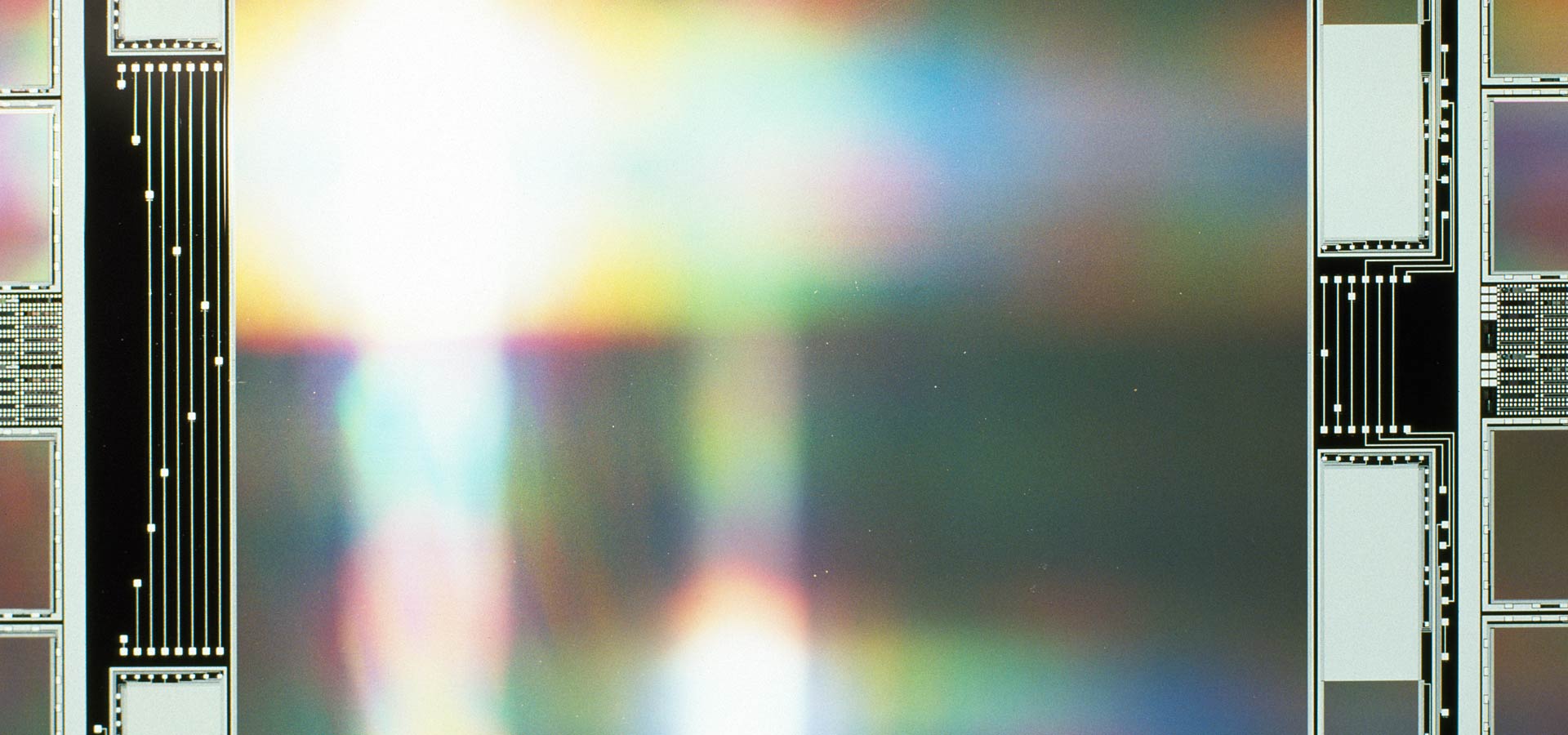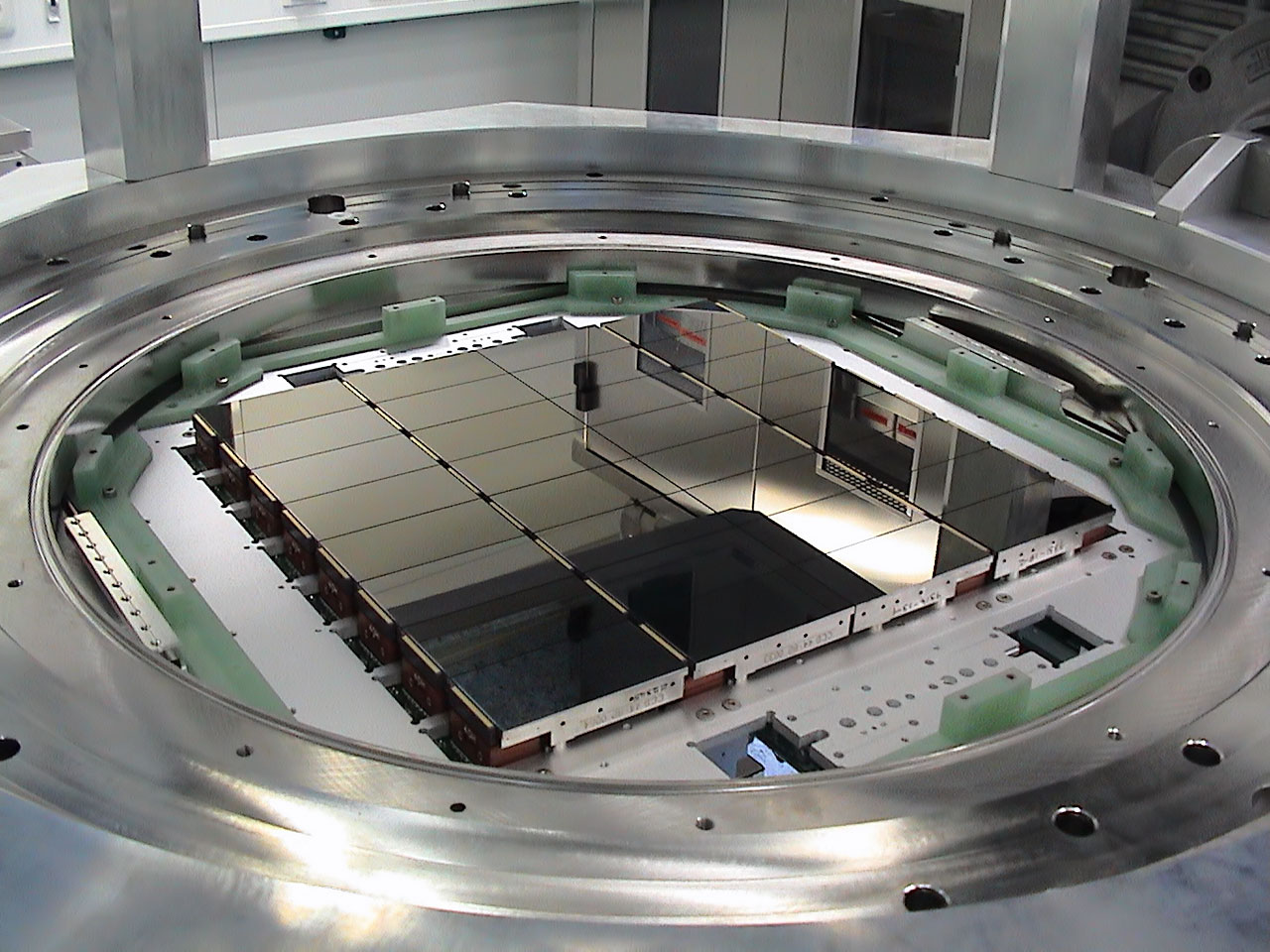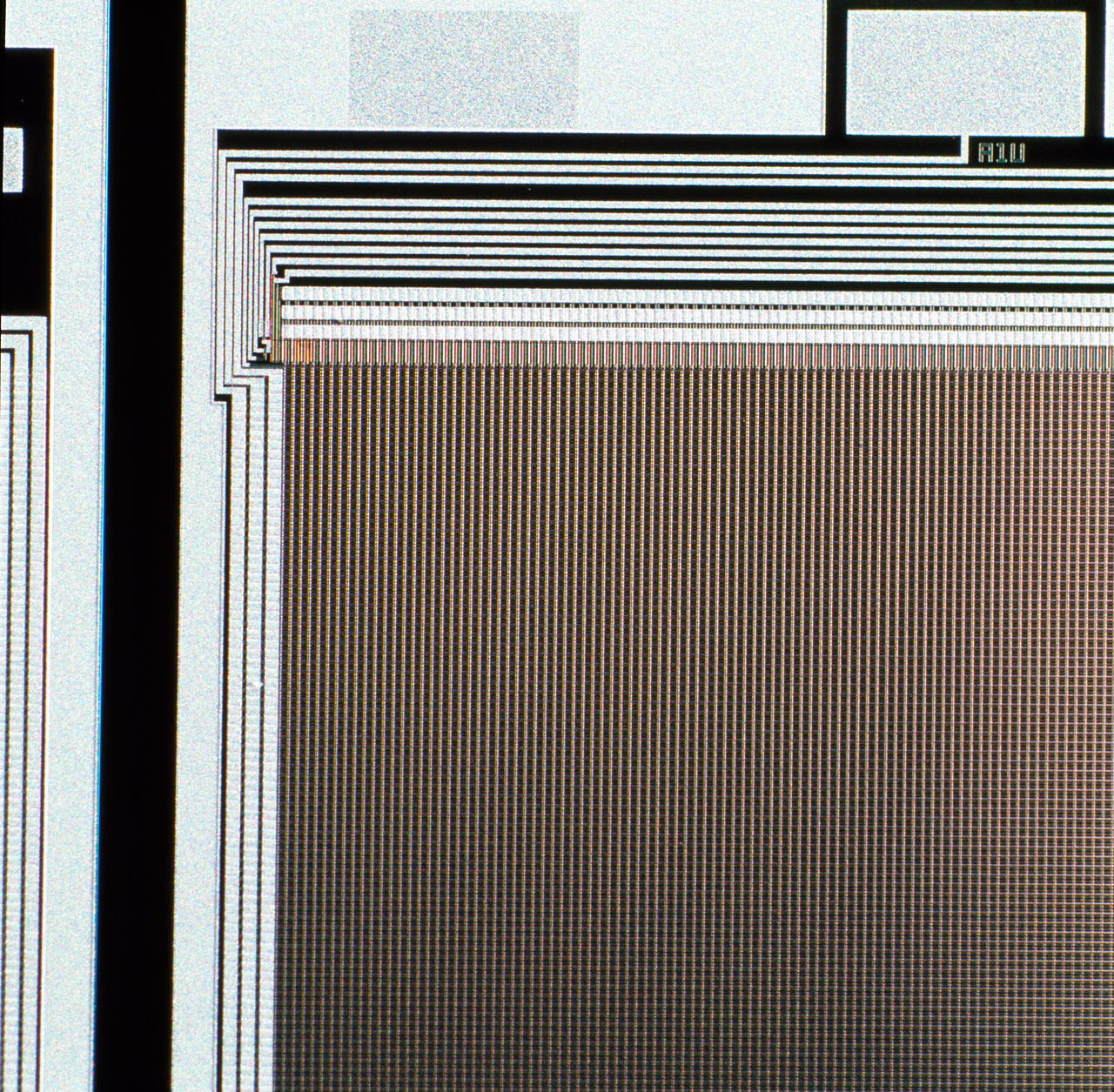- How the Cold War drove forward CCD technology and changed astronomy
- How CCDs enable us to make new discoveries and take beautiful images of the cosmos
- Why CCDs may be replaced by a new type of detector within the next ten years
Q. How were CCDs invented and why was there a need for them at the time?
Olaf Iwert (OI): The CCD was originally developed as a memory device, but people quickly realised that they could also be used for imaging. They are now used in most astronomical imaging instruments, as well as in many digital cameras and early smartphone cameras.

Interestingly, Kodak’s management initially completely ignored CCDs as they wanted to promote the film segment of their company. The strongest driver was actually most likely the Cold War and the resulting reconnaissance applications; the CCD technology used in the Hubble Space Telescope was not the first of its kind but a “left-over” of the United States’ Cold War reconnaissance programme! Surely the Cold War and the push for Hubble were very strong drivers of scientific CCD technology development.
CCD-guru Jim Janesick was doing CCD research for Hubble at NASA’s Jet Propulsion Laboratory, but we don’t know whether the military were secretly using even more advanced devices before that time. We do know for sure that companies involved in military business played an important role in CCD development, and in my view, from then on civil astronomy and military CCD applications went hand-in-hand, as the requirements were quite similar. Now, to my knowledge all ESO instruments observing visible light use CCDs, as these detectors continue to be the state-of-the-art in this field.
The use of CCDs in everyday photography happened about 20 years later than the application of scientific CCDs to astronomy; the astronomical CCDs were the pioneers of digital photography. But there is a big difference between the scientific CCD image sensors that we use at ESO for astronomy and commercial CCDs such as the ones used in video cameras. Scientific CCDs are thinned, backside illuminated, and surface-treated to collect as much information as possible about the observed object. Scientific CCDs are also typically monochrome, meaning that they don’t filter colours so they collect all of the available light with the highest possible efficiency. Commercial CCDs, on the other hand, mostly produce colour images.
Q. What made the manufacturing of CCDs possible?
Josh Hopgood (JH): The first CCD was developed by two physicists at Bell Labs, Willard Boyle and George Smith, who were originally interested in transistor technology, which was invented around 20 years before the CCD. As the first CCD was produced using a transistor manufacturing facility, I would argue that the invention of the CCD at least required the invention of the transistor. As is usually the case, the detectors themselves and the manufacturing technologies used are developed in parallel — scientists and engineers (and the occasional entrepreneur!) are constantly pushing the boundaries of what is possible. Modern CCDs rely heavily on a number of very well-developed manufacturing technologies, and it will probably be the case that novel uses of these technologies give rise to the next generation of detectors for astronomy.

Q. So how exactly does a CCD work?
OI: A CCD is a two-dimensional array of millions of pixels, each of which collects photons of light and converts them into an electric charge when the CCD is exposed to light. Instead of using a wire to sense the charge from each pixel, the charge is first transferred vertically and then horizontally to reach a single output amplifier that measures the amount of charge from each pixel. The classic analogy is to think of a CCD as a set of rain-collecting buckets along a series of conveyor belts; first the conveyor belts move the buckets in one direction, onto a single conveyor belt that moves all the buckets in a perpendicular direction to pour the water into a measuring cylinder that measures the amount of water in each bucket one-by-one.
JH: An interesting side note: CCDs convert light into an electrical signal by means of a physical principle called the “photoelectric effect”. It was discovering this effect that led Einstein to figuring out the foundations of quantum physics!
Q. What advantage do CCDs have over other types of detectors?
OI: CCDs were the first two-dimensional array semiconductor imaging devices to be invented. Compared to their predecessors, they have a much higher spatial resolution, are better at imaging bright sources of light, are more rugged, and consume less power. And as they started being mass produced for commercial uses, they also became much cheaper.
Every detector has several sources of noise, but CCDs have less noise than their predecessors. For example, converting electrons into a voltage at the output amplifier always creates some noise, but because CCDs “read out” the electrons produced by each pixel slowly and the geometry of the output transistor is optimised, this source of noise is very low.

Q. How have CCDs changed over the last fifty years?
OI: They have improved greatly in so many ways. For a start, they now contain more pixels. The pixels can also be larger or smaller depending on the instrument’s optical design. We now also have optimised output transistors with less “readout noise” whilst operating at a higher speed, more efficient charge transfer, improved mechanical packaging for better cooling, higher quantum efficiency, less dark current noise, fewer defects inside the imaging area, better optical coatings, higher reliability...the list goes on! Another development is that CCDs can now be specially designed to be optimally sensitive to specific wavelengths of light. An example for this is the use of optimised detectors for the blue and red ends of the visible spectrum, as for example used in the Very Large Telescope’s ESPRESSO instrument.
Q. Josh, you previously worked at one of the major world producers of CCDs. What is it like to now work at an observatory where the same CCDs are used?
JH: From a personal perspective I find it very rewarding to see the detectors put into use, especially for such grand-scale purposes! I would say that it’s often easy to contain oneself within a bubble, and then forget how your work impacts other people around the world. Taking the position at ESO was a real eye-opener for me!
Q. Olaf mentioned CCDs being used in digital cameras; what other applications are there?
JH: CCDs are used for lots of different things! Here’s a quick selection of some of the more interesting applications:
- CCDs perform particularly well whenever you want to take a picture of something bright and something faint at the same time. For this reason, they are employed not only in astronomy, but also in life sciences research. For example, it has been possible to use a CCD to image the fluorescence from a marker molecule inside the brain of a living mouse!
- As well as being sensitive to visible light, CCDs are also sensitive to X-rays, and therefore the dental market is quite significant.
- Line-scan CCDs have extremely fast frame rates, and are used for quality-control checks on production lines for items such as circuit boards.
- When combined with other technologies, CCDs make extremely good night vision cameras, and are therefore employed in search and rescue cameras, as well as military applications.
- Though becoming less favoured, CCDs are indeed still employed in many high-end digital photography/videography systems.
Q. Do you know approximately how many CCDs are sold worldwide every year?
JH: For large detectors that are at the core of space-based and ground-based astronomical research, such as the ones used at ESO, I would estimate that a few dozen detectors are delivered worldwide to customers each year; perhaps more than 50, but probably not as many as 100. For other applications, the number could vary from a few hundred to a few thousand per year, but this is steadily decreasing as new technologies offer cheaper solutions with similar performances. We’re already seeing the gradual decline of the CCD market due to other competing technologies, which has led to the closure of some CCD manufacturing lines.
Q. So do you think that another type of detector will become more common in the future?
JH: CCDs are certainly still relevant for ground-based astronomy, and will be for at least another 5–10 years because their large number of pixels and high dynamic range are practically unrivalled by the current generation of new technologies. However, the ground-based astronomy market is a very small one, and it therefore tends to be a technology-follower rather than a technology-driver.
What I mean by this is that larger markets such as space-based astronomy tend to dictate developments in sensor technology, and ground-based astronomy will be forced to adopt these new technologies as the older sensor types become obsolete and/or no longer produced. The most likely successor to CCD technology is CMOS Image Sensors, however I would argue that a significant amount of development is required to bring this technology up to the standards that astronomers are used to when making observations with CCD-based systems. In the longer-term future, I am looking forward to the development of an MKID-based imaging sensor for astronomy, as these should be able to tell us not only the intensity of a light source, but also the colour and arrival time of each photon!
Mark Downing: I agree. Unfortunately, technology moves on and while CCDs are almost perfect detectors, newer cheaper technologies such as CMOS Image Sensors are on the horizon, and these will replace our scientific CCDs in the next few years. This has already happened in commercial cameras and mobile phones. The mobile phone industry is very large and leads to technology innovation in so many areas, but ESO is also at the forefront of innovation with its own CMOS Image Sensor development programmes.
Q: Mark, you work with a type of CCD specially designed for adaptive optics. Could you explain what this means and why CCDs are the right tool for the job?
MD: Some ESO telescopes make use of deformable mirrors to reduce the distorting effect of the atmosphere on starlight. We use these high-speed CCDs to detect the “twinkling of the stars”. The images we observe with the CCDs tell us how to move our deformable mirrors to take out the “twinkling” to obtain very sharp images. This is called adaptive optics. Without this improvement in image quality, large telescopes like the Extremely Large Telescope (ELT) would not be feasible.
High frame rates are required to track the profile of the atmosphere which changes on very short timescales. The technologies we use for these types of CCDs are very special because they allow us to read them out at high frame rates with almost zero noise. This is essential because we choose “guide stars” close to objects we want to observe to correct for atmospheric distortions, and these are often very faint.

Q. Do CCDs require special conditions to work? If so, how does ESO ensure these conditions?
MD: To get the best performance out of our CCDs, we cool them to very low temperatures in the range of -40°C to -120°C to reduce what we call “dark current”. Dark current is created by thermally-excited electrons (rather than light-excited electrons), and is the noise signal you get when there is no light. The lower the temperature the lower the dark current. If you want to see the faintest objects (which are often the most interesting!) then you want to reduce the dark current to almost zero.
To achieve this, we mount the CCDs inside a sealed metal housing called a cryostat, in which there is no air. The principle is similar to keeping a hot drink warm in a thermos, except instead of keeping something warm, we want to keep our CCDs cold. Inside the cryostat with the CCDs is a cooling source such as a tank of liquid nitrogen, an electrical cooling device, or an electro-mechanical machine called a cryocooler.
Numbers in this article
| -40 to -120 | Temperature that CCDs work at in degrees Celsius. |
| 5 to 10 | Likely number of years for which CCDs will continue to be relevant for ground-based astronomy. |
| 20 | Number of years between CCDs first being used in astronomy and first being used in everyday digital photography. |
| 20 | Number of years between the inventions of transistor technology and CCDs. |
| 32 | Number of CCD detectors in the VST’s OmegaCAM camera (each measuring 6 cm by 3 cm). |
| 50 | Number of years since the invention of the CCD by Willard Boyle and George Smith, who won half of the Nobel Prize in Physics for their invention in 2009. |
| 50 to 100 | Approximate number of CCDs delivered each year for space- and ground-based astronomical research. |
| 81 000 000 | Number of pixels in the VLT’s ESPRESSO instrument. |
Biography Olaf Iwert, Josh Hopgood and Mark Downing
Olaf Iwert studied electrical engineering at the RWTH Aachen, Germany, specialising in communication electronics. He has worked in ESO’s Detector Systems Department since 1991 and has been involved in almost all scientific optical detector (CCD) systems since then, accompanied by the development and implementation of associated control electronics and cryogenic cooling systems in use at ESO's observatories La Silla and Paranal. Olaf’s work focuses on large detector mosaics, scientific CMOS detectors for wavefront sensing, CCD implementation in ultra-stable spectrographs, and R&D about curved detectors for potential use in ELT instrumentation.
After receiving a master’s degree in Physics from the University of Oxford, UK, Josh Hopgood spent four years as an Applications Engineer at Teledyne e2v, where he worked on CCD and CMOS requirements for customers. Josh is now a member of the ESO Detector Systems Group and has recently been responsible for the delivery of the CCD detector systems to the 4MOST instrument consortium.
Mark Downing is an expert on very specialised types of detectors and cameras: those used for high-speed wavefront sensing. Mark graduated as an Applied Scientist from Melbourne University. During his 40-year career, he has worked on many different scientific instruments both in Europe and in Australia. Mark is a keen gardener and home handyman and loves walking his dog and riding his bicycle.




